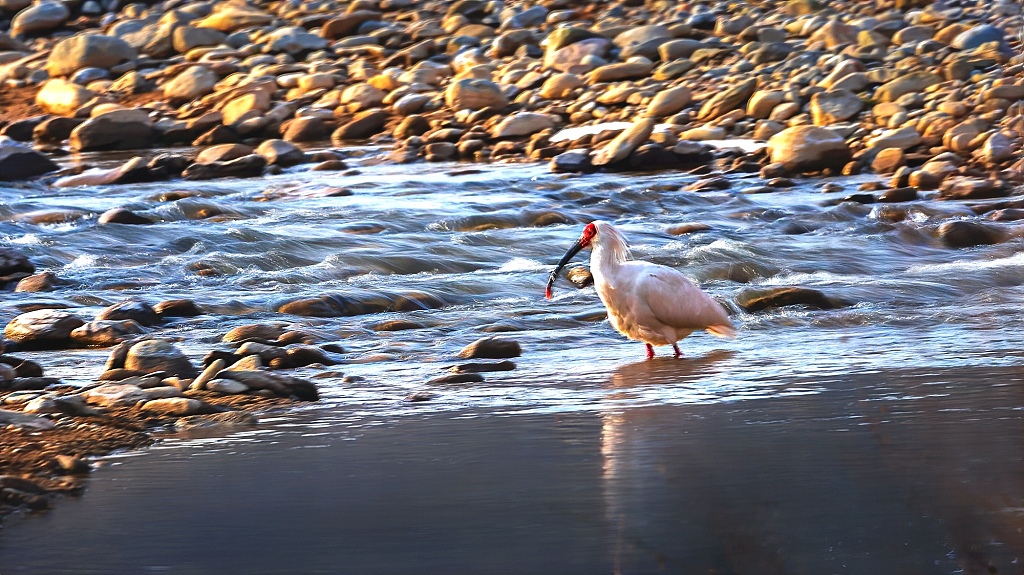01:00

Six stories you may have missed from China this week:
Ibis recovery
The global population of crested ibises has increased from seven in 1981 to more than 9,000 at present, according to the forestry authorities of northwest China's Shaanxi Province.
The species' habitat area has expanded from under 5 square kilometers to about 16,000 square kilometers, and the distribution range of the rare birds has gradually expanded to its historical area, said Dang Shuangren, director of the provincial forestry bureau.
The crested ibis, with its iconic red crest and long black beak, was once widely distributed across East Asia and Russia's Siberia. It was thought to be extinct in China until seven wild birds were observed in Yangxian County of northwest China's Shaanxi Province in 1981, a discovery that prompted captive breeding and enhanced the protection of the species.
Currently, about 7,000 crested ibises live in Shaanxi, Dang said.

Space crew change
The three astronauts on China's Shenzhou-15 mission conducted the country's first-ever in-orbit rotation with the Shenzhou-14 astronaut trio.
The Shenzhou-15 crew entered China's space station and met the Shenzhou-14 crew, who had lived on the space station since June, boosting numbers on board to six for the first time.
The Shenzhou-14 crew returned to Earth a few days later.
Parcel deliveries rise
China's courier sector is experiencing an accelerated recovery, with average daily business volume steadily rising since late November, the State Post Bureau said.
From Friday to Sunday, over 300 million parcels were handled daily on average as the shopping season approaches its peak, according to the bureau's data.
Deep-sea lab deployed
China has deployed its first deep-sea in-situ spectroscopy laboratory on the seabed in the South China Sea, which will enable long-term scientific research in the area.
The uncrewed laboratory can be operated regularly in deep-sea cold seeps and hydrothermal vent areas, and conduct long-term and multi-target observation, data acquisition and controlled experiments for the purpose of studying the effects of cold seep and hydrothermal vent on marine ecology and global climate change and to explore scientific hypotheses.
Zhang Xin, a researcher at the Institute of Oceanology under the Chinese Academy of Sciences, said that the laboratory could withstand pressure of up to 4,500 meters at the bottom of the sea, which enables it to cover most of the South China Sea.
It could be used to study deep-sea sulfides and minerals, with which could be important resources in the future, Zhang added.
Trade boost
China's foreign trade volume increased 8.6 percent year on year in the first 11 months of 2022 to 38.34 trillion yuan ($5.5 trillion).
Exports rose 11.9 percent year on year to 21.84 trillion yuan, while imports increased 4.6 percent to 16.5 trillion yuan during the period, according to the General Administration of Customs.
Exports of new energy products stood out among the categories. Lithium battery and solar cell exports increased by 86.6 percent and 74.3 percent, respectively.
Satellite network expands
Two meteorological satellites, along with their ground application systems, have officially started operation, said the China Meteorological Administration on Thursday.
They form part of the Fengyun network and aim to meet the needs of meteorological monitoring and forecasting, disaster prevention, and mitigation for China and the countries along the Belt and Road.
China has launched a total of 19 Fengyun meteorological satellites, seven of which are currently in orbit. They are providing data products and services to 124 countries and regions.